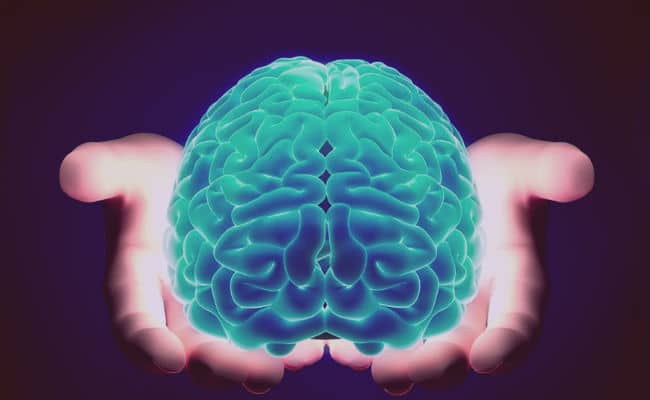The cerebro has been a part of the body that humans have studied and researched for many years, since in it are great mysteries, and the explanation of the operation of all the movements and actions that a person executes during his life. The brain is divided into two parts that are not symmetrically the same, but which in turn are very similar in appearance. These parts have been called the cerebral hemispheres, between them is the right and the left and each one fulfills specific functions different from those of the other, but that most of the time they work together.
The division of functions of the cerebral hemispheres is unique to humans, since after several investigations it has been possible to find enough information that serves as proof of this, although the competitive differences that can be found in both are not usually so different in most people.

The right hemisphere complements the left, and vice versa so they need each other to be able to do a good job. It was established that in a large part of adults the speech system is on the left side, although research has shown that left-handed people usually have speech control on the right side, or by default in both hemispheres of the brain.
A curious fact about the hemispheres is that the left side controls the right side of the body, while the right hemisphere controls the left side, although it has been shown that in more than half of left-handed people the center of speech develops on the left side , and less than half in the right.
Definition of cerebral hemisphere

The human brain is one of the most complex organs that it has in its body, and this is due to the fact that thousands of activities and functions are developed in it that allow the correct procedure of the whole body in general, and in which they are even generated things like thoughts, language, and much more.
In order to study the brain in a simpler and faster way, it has been divided into two parts which have been called with the name of hemispheres, one being respectively right and therefore the other is the left. These sides of the brain can be easily noticed because in the middle of the brain there is a line known as the interhemispheric or longitudinal fissure and it is interconnected by the corpus callosum which is a set of white nerve fibers.
Classification of nerve fibers
These fibers are responsible for ensuring that the entire system remains connected and that energy and information can be sent from one point to another without any inconvenience, and these white substances can be found in the lower part of the cerebral hemispheres, exactly by the cortex, which can be divided into three different fibers, the projection fibers, the association fibers and the commissural fibers.
- Projection fibers: it is a sheet of white matter, which is responsible for separating the basal nuclei from the thalamus, and in turn have the function of transmitting direct impulses from the brain to the spinal cord, and carry out the process in reverse equally.
- Commissural fibers: these form a large thick structure known as the corpus callosum that is located precisely in the longitudinal fissure, and its main function is to transmit and connect nerve impulses so that the two hemispheres communicate effectively.
- Association fibersThese fibers, unlike the others, work with a single hemisphere, and their function is to share neurons and communicate them from one part of the cortex to another part of the same hemisphere.
Functions of both hemispheres
The functions of the hemispheres can be easily divided, since on the right side a greater activity of the non-verbal processes that people carry out daily can be observed, while on the left side the verbal unfolds such as the language.
It has been shown that there is always one hemisphere that is more active than the other, and this depends on whether the person is left-handed or right-handed, although there are some cases where they can preferably use one hand and that the greatest activity is found on that same side, but in reality it cannot be said that one side dominates over the other, Because if a person focuses on developing both sides of the brain, they could do so without any problem, there are even exercises to avoid Alzheimer's that consist of using the sides that they are not used to using in order to develop it and have less probability of suffer from the aforementioned pathology.
Left hemisphere functions
This hemisphere is characterized by be the one of logical reasoning, since in it you can find linguistic functions such as speech, languages, writing, mathematics, among other things.
When people have more developed the left side they tend to be more analytical and have a better performance in logic and reasoning activities such as mathematics, languages, even in music since it is a very numerical art.
The well-known intelligence tests that are practiced on people usually focus on the functioning of the left hemisphere, and it is because it has the ability to handle everything logical, linguistic and numerical, and most of these tests present problems related to these thematic it is natural that that side is used to specify them.
Functions of the right hemisphere
This is considered as the side that competes with the non-verbal functions and activities of human beings since it focuses differently from that of its neighbor, trying to solve the problems that arise not analytically, but rather in an analytical way. comprehensive because people who have this brain hemisphere more developed tend to understand the world in a more visual way, which means that learning is facilitated by visual means.
The right hemisphere is characterized by being the one who understands the spatial context of the world, so it is aware of everything that surrounds the person in general. It has been shown that people suffering from injuries on the left side can develop speaking skills on the right side, although they are not as strong as those on the left.
Fun facts about the functioning of the cerebral hemispheres
There are two different types of sight and ways of perceiving things that depend on whether the person uses the right hemisphere more, or the left, the names of each being linear sequential perception and visual simultaneity, the first characteristic being the left and therefore the second of the right.
People with linear sequential perception tend to analyze things by looking at every little detail before being able to dictate a result or opinion, while those with visual simultaneity focus on everything at once, being able to find the problem by relating the entire environment of just one time.
La way to solve the most common problems in the population is through the use of analysis, but this form has been shown to be exclusive to people who have linear sequential, while those with simultaneous visual perception tend to use synthesis, which is a way of putting together a set of the whole to solve it that way.
At an early age, exactly before the age of 10, both cerebral hemispheres have the possibility of developing the speech center, since it has been seen that children who suffer lesions on the left side of the brain tend to develop the aforementioned ability on the right. .
Previously, it used to be believed that the brain activated different areas depending on the action that the individual was going to perform, but thanks to advances in technology it was known that both hemispheres actually work together to perform most daily activities.
To be able to combat memory loss diseases such as Alzheimer's, it is necessary to carry out activities that exercise both sides of the brain so that if one were to fail and both would be used to functioning or exercising all the activities that correspond to both sides, granting the ability to remember and act in the same way to both hemispheres.
It is a very entertaining scientific dissemination platform that can motivate readers to continue expanding their knowledge.